November 20, 2004 - Mississippian Fossils, St. Clair Co, AL
Donning
orange and blue, red and white, or...mud and well, a little more mud,
the BPS
explored a new site in St. Clair County, Alabama. The
weather was just a tad misty after our outing but cool and comfortable
during
our adventure. Our fearless leader led us
to a Mississippian age roadcut yeilding some of the
largest horn coral that I have seen, with a perfect geologic example of
"uplift". Several varieties of coral were found, and a number
of
whole brachiopods were collected from the layers around the Tuscumbia
Limestone. There were also hollowed out molds in the Ft.
Payne
chert where archimedes or crinoids had once been.
None
of
our members minded that our actual collecting time was shorter than on
many of
our trips, as most members were eager to put their orange and blue or
red and
white clothing to use as they "collected some radio and television
time", because there was some
important football game being played....tiny
mumble...mumble...#*%...how did we
manage to vote on this weekend for the field trip in the first
place????????
MY TEAM WON!!! How 'bout yours?
--Edited by Vicki Lais
(Photos courtesy Steve Corvin and Vicki Lais.)

The group before playing in the red clay!

Leisa and
Nancy checking for fossils weathered out of the matrix.
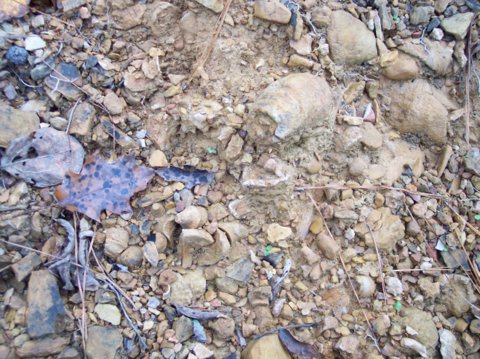
Coral pieces
covering the ground in this area.
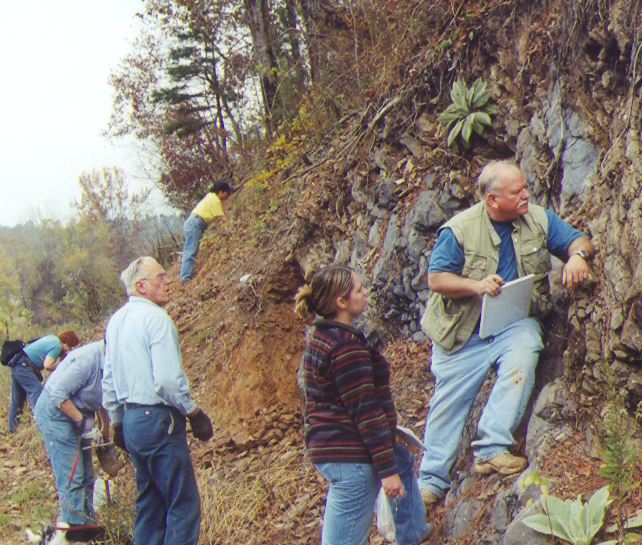
Getting a
closer look at the geologic layers.

Lee with her
finds.
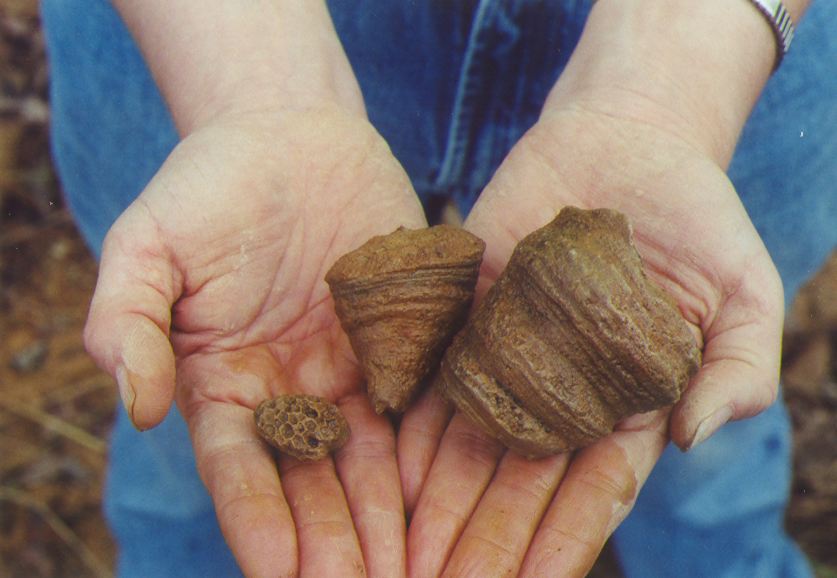
A closer look
at the nice coral specimens found by Lee.
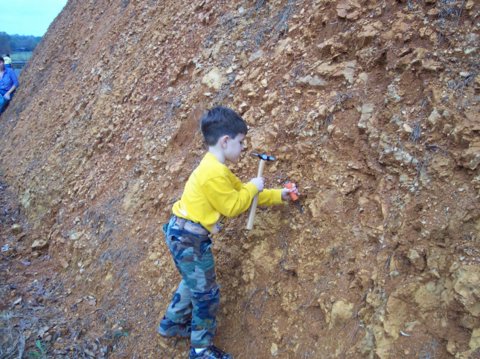
Steve is
determined to get that fossil!
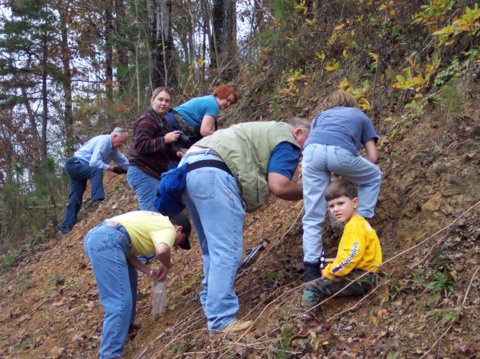
One of the
better collecting spots.
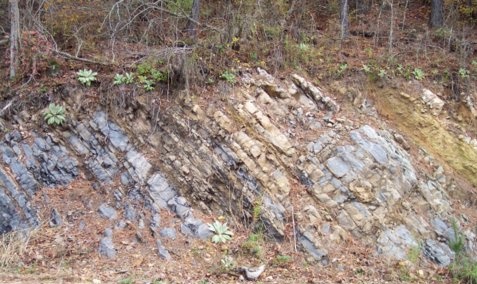
Layers of
limestone, shale, and mud tilted upward by geologic forces,
and exposed at a roadcut. "Newer" rock is to the right,
"older"
rock is to the left. Rock layers were horizontal when they
were
initially formed.
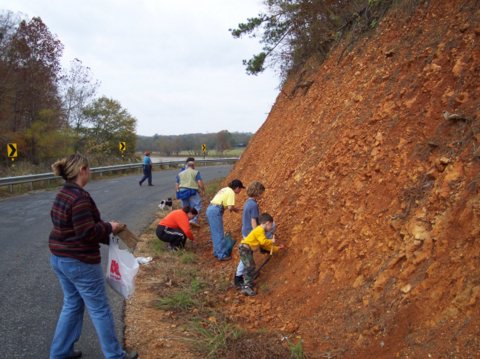
One of the
muddier collecting spots!
